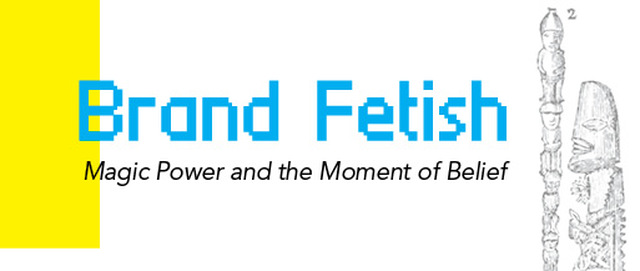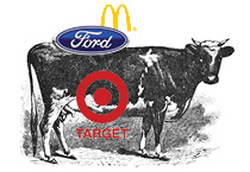
Justin Panson
This is not another long winded celebration of ‘branding’ from a self satisfied marketing guy. Instead, there may be more gained from looking at the contrary side, the underbelly of branding. As we race toward some vision of the digital promised land, new conveniences arrive daily that streamline every aspect of our lives. As part of this bargain, technology multiplies the delivery of brand messages. The ubiquity of branding, like it or not, is one of the defining aspects of our age. The once functionary designation of livestock property, has ascended to a rarefied perch, from which today’s largest companies speak in life-affirming, philosophical ways and are worshipped with a religious ardor. Creative professionals like myself are cheerleaders for branding, repeating definitions like mantras, embellishing the topic with words like promise, personality, essence, affinity, habit, love connection, and of course the meta word, loyalty. That’s what every company is after, earning loyalty. And they earn it through unflinching fidelity to brand rules, by being singular in the marketplace, and by simply being awesome! 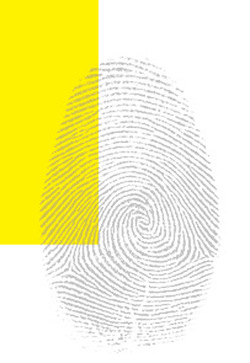
Brands do their work down in the murky realm of identity. Increasingly, we define ourselves through the stuff we consume—that is, consumers use brands to create their own identities. I am a Ford man, she is a proud Apple geek. In the crossfire of so many media and information choices, the question of who you are becomes complicated. In a way, brands are how we make sense of life. But it’s not just a one-way identity flow from brand to consumer—a brand derives its identity from its customers. So there’s a two-way identity exchange. That is powerful stuff.
In the crossfire of so many media and information choices, the question of who you are becomes complicated. In a way, brands are how we make sense of life. 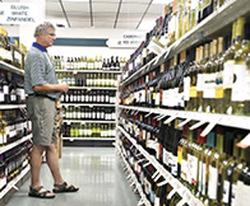
.
When you peel back the high-minded language surrounding branding, what you see are the underlying mechanics of commerce. Branding is highly beneficial to the branded company because it removes the transaction from normal price competition, distracts and disarms rational consumer evaluation. A smitten consumer doesn’t have a wandering eye, and is more willing to accept, even seek out, premium pricing. Loyalty is a company’s biggest asset. The wine industry offers an excellent example of the connection between branding and premium pricing. I have a brother-in-law who prides himself on drinking good wine. He reads the right information and finds his way to the better wine shops. Everyone knows someone like this, someone who is willing to pay more for higher quality. But there is an uncomfortable truth at the heart of wine marketing: blind taste tests using both expert and amateur subjects continue to show little to no correlation between price and what people think tastes good. Vintners doing battle on crowded retail shelves rely more than most sellers on branding to associate their products with perceptions of quality and status. Packaging, labelling, name and price itself are the cues that create inferences in the mind of the purchaser. In this sense, you would not be incorrect to suggest the wine label is more important than what’s inside the bottle. One of the trends in advertising is to tell stories, brand stories, in an effort to reach jaded, overexposed consumers who may no longer react to conventional ads. Ad agencies are telling real stories to create a sense of ‘authenticity’ and make deeper emotional connections that traditional ads can’t make. Dori Tunstall, a design anthropologist, on stories: “Our rituals of consumption are no longer satisfactory to us because they are empty of human relationships.” She offers an example of the transactional power of stories in an unlikely place. She cites a recent study that found garage sale transactions left people feeling very “satisfied about the interaction...because the object they buy comes with a story—a very real, personal story about where the object fit into someone’s life. Whether it’s real or not, you connect with that person through the object.” So you have Coca-Cola, a $75 billion multinational corporation, trying to replicate the good vibe of the lowly garage sale. Strange life. (for a deeper dive, read Ann Friedman's essay The Magic of Estate Sales) So you have Coca-Cola, a $75 billion multinational corporation, trying to replicate the good vibe of the lowly garage sale. Strange life. 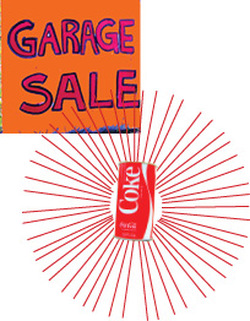
Great brands cast a spell. That shirt with ‘Nike’ printed on it is believed to be better than a similar unbranded shirt. It is invested with all of that Nike life affirming, self empowering philosophy. The shirt becomes an object with magic power, something worth believing in. The analogy with the fetish object is irresistible: a small wooden figurine worshipped in ancient cultures—a material object thought to have magical powers. In this sense, a brand is a modern sort of fetish. Where does superstition end and belief begin? The connection between branding and belief systems is an uncomfortable one. Chief among modern man’s conceits is his own perceived sophistication. Yet this tribal analogy reminds us that we may not in fact have evolved quite so far as we think. Talk of voodoo and ancients is not incompatible with the state of witchcraft that is the field of consumer research. I heard tell of a marketing consultant extracting large fees from brand managers to unlock for them the ‘reptilian core’ of the consumer, the illusive pre-rational mind. Big data and tea leaves. Our best understanding of branding may not come from the ivory tower of communication theory. Rather it may lie within the realm of good old fashioned salesmanship and showmanship. What great salesmen have always done is to create belief. One of the ironies in the Wizard of Oz is that the wizard turns out to be merely a sales guy. But he gives the pilgrims the only thing they really wanted—a moment of belief. 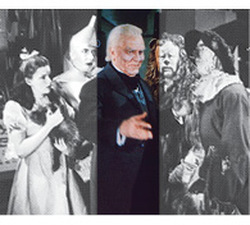
The Kansas alter ego of the Great and Powerful Oz is a travelling carnival barker, predecessor of the lowly carnie. Branding is often understood at the upper end of the food chain, by looking at the best practices of corporate marketers. But the mechanics of brand and belief are the same all the way down the line—From the gratitude ritual at the Nordstrom cash register, to the circus, the carnival and even the melodramas of studio wrestling. In that form of salescraft, there is a term for the suspension of disbelief—called Kayfabe. ‘Don’t break Kayfabe’ is the absolute rule of the performance. Maintain suspension of disbelief at all costs.
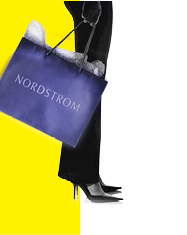
This is, admittedly, a cold-eyed look at the psychology and mechanics of branding. But don’t take it as gratuitously negative, and don’t think I’ve called bullshit on my own craft. If I have touched on the dark side of consumerism, it is so that we may be better practitioners...or more wary consumers. Brands enable commerce, and that is a good and necessary thing. Today, as always, our brands provide us with three essential things: belonging, identity and a moment of belief.
Further Reading: How Capitalism Created Cool Bourree Lam The Future of Branding in a Transformative Economy Eric Garland |
|
© Copyright Confluence Studio. All rights reserved.
|

